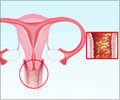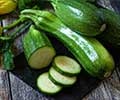- Peculiarities of diet therapy in children with duodenal ulcers associated with the genus Candida - (http://www.ncbi.nlm.nih.gov/pubmed/23402178)
- Candida Diet - (http://www.everydiet.org/diet/candida-diet)
About
Candida is a group of micro-organisms that are commonly known as yeast. These one-celled fungi inhabit human living tissues and are otherwise harmless, but when some of the species, usually Candida albicans, grow out of control, they become ‘opportunistic pathogens’ and cause human infections called candidiasis or thrush.
So, when do they become such ‘bad’ microbes? It is when stress, diets that include sugary and processed food, compromised immune system (as in AIDS), weak immune system (as in diabetes, chronic fatigue syndrome, or psoriasis), overuse of steroids or antibiotics, alcohol, and birth control pills – any of these, kill the ‘good’ bacteria in the gastrointestinal tract and in the process destroy the first line of defense against Candida. The Candida microbes flourish and take over the gut, penetrate the intestinal wall and enter your circulatory system. From there they start infecting the tissues and cause diseases ranging from acne to IBS to heart disease to food and chemical allergies.
As it happens, it is possible to reverse Candida infection through a strictly followed
The next step is to provide your body with sufficient probiotics to restore the healthy balance of intestinal flora. Probiotic organisms are live single-celled bacteria commonly found in the human digestive tract, vagina. Probiotic organisms such as Lactobacillus acidophilus are also found in dairy products, especially yogurt. Probiotics work by creating a barrier that prevents pathogenic bacteria and virus to multiply inside the body. They also stop harmful organisms from flourishing by changing the acidic environment in the intestine.
The most important step in the Candida diet plan is to eat a diet devoid of sugar, simple carbohydrates, gluten and yeast, since these can ferment and negatively impact the pH of the body.
So, you need to essentially avoid foods like alcohol, fruits, mushrooms, zucchini, most dairy products, baked goods (because they contain yeast), processed, smoked and sugar cured meats, left over or stale foods (because they may develop molds), and of course, sugar or sugar containing foods.
Well, despite the long list of ‘don’t eats’, it does leave you with quite a number of foods that you CAN eat. For example, fresh seafood, fatty fish, poultry, eggs, lean meats, nuts, pasta, vegetables except mushroom and zucchini, unsweetened jams, peanut butter, most fruits, beans, ricotta cheese and cottage cheese (avoid other cheese), and most importantly whole or skim plain yogurt.
Normally, six weeks is sufficient to see the results but if you experience severe symptoms you may have to continue this diet for a few more months.
Dr Natasha Campbell-McBride and few other experts believe that Candida diet doesn’t really heal. ‘You may getter better but once you get back to your regular diet, candida returns with vehemence,’ they say.
Not much research has been done on Candida diet, so it is pretty much one expert’s word against another. But all said and done, it is always healthy to restrict sugary and processed foods, so Candida diet does bring relief.









